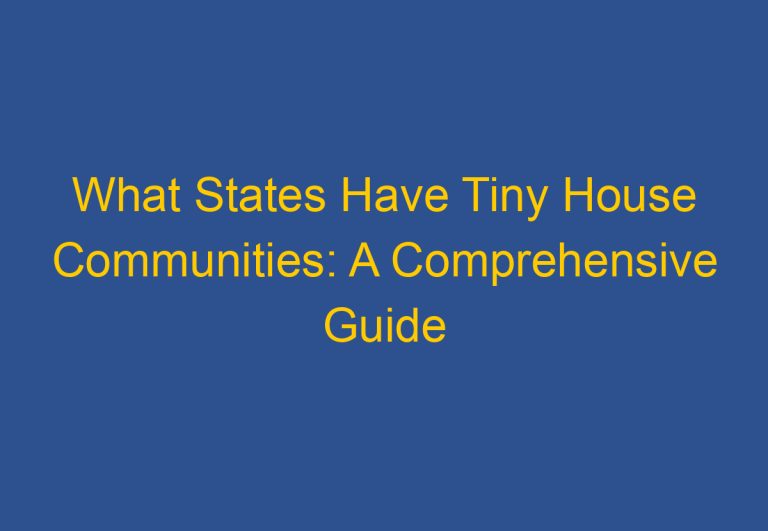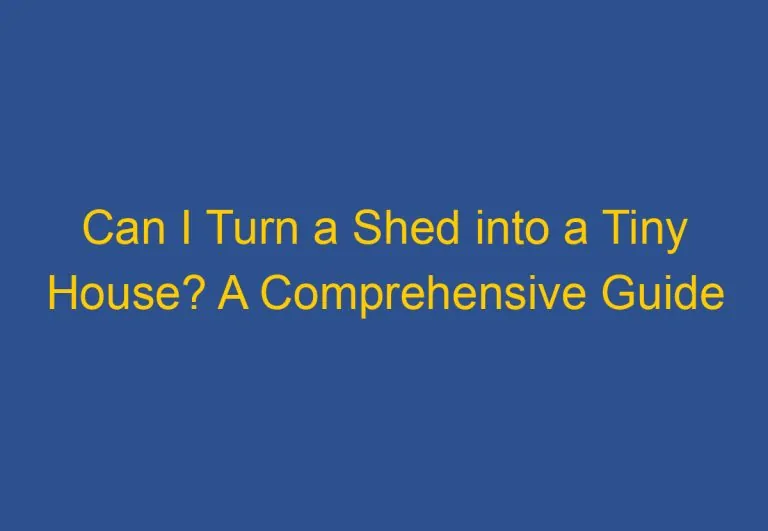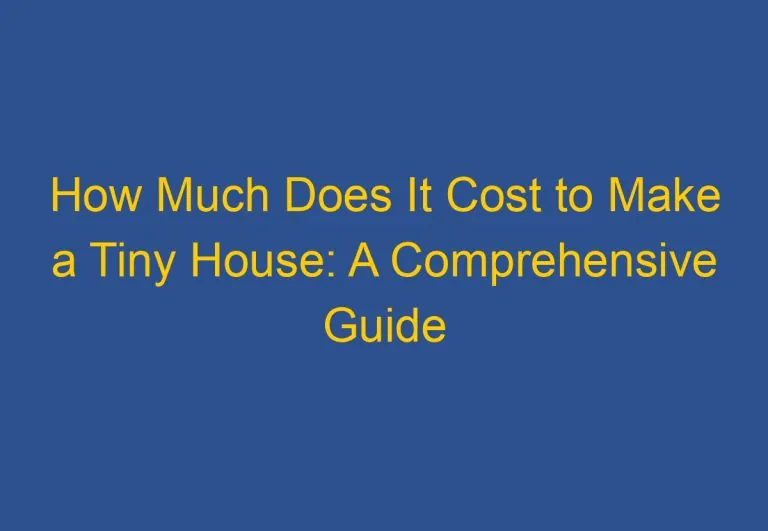Where Can You Put a Tiny House in Washington State: A Guide to Zoning Laws and Regulations
Tiny homes have become increasingly popular in Washington State in recent years. However, finding a place to put them can be a challenge. Zoning regulations vary between jurisdictions, which means that the answer to where you can put a tiny house in Washington State depends largely on where you live.
The state has passed legislation containing requirements for tiny houses, but these vary depending on whether the tiny house has a foundation or is on wheels. For tiny houses on a foundation, Washington State has adopted Appendix Q Tiny Houses, which relates to building codes for tiny homes. The effective date of this legislation is July 1st, 2021. For tiny houses on wheels, they are considered recreational vehicles and must be registered with the state.
Legal Framework for Tiny Houses in Washington State
State Building Code and Appendix Q
Washington State has adopted Appendix Q Tiny Houses, with amendments, effective from July 1st, 2020. The state building code council has also written building codes for tiny homes, as mandated by Tiny House Bill 5383, which became effective on July 28th, 2019. The building codes relate to tiny homes on a foundation, and the effective date is July 1st, 2021. Essentially, any tiny house built to IRC (International Residential Code) standards can go anywhere a conventional house will go. Some tiny houses on wheels, those built to ANSI 119.5 standard for RVs, are allowed in RV parks. These are called Tiny House RVs.
Zoning Regulations and Local Ordinances
The codes and regulations may vary in towns, cities, or counties. Local jurisdictions set their zoning regulations and local ordinances. For example, Woodland allows ADUs ranging between 300 and 800 square feet in size, and tiny houses in King County must have a foundation. Senate Bill ESSB 5383, effective July 28th, 2019, supports movable tiny homes and prohibits cities or towns from preventing their use as primary residences in manufactured or mobile home communities.
Permitting Process and Inspections
The permitting process and inspections for tiny houses in Washington State are similar to those for traditional homes. The tiny house information packet includes the standards to which you need to design, plan, and build your tiny house. The Tiny House Plan Approval & Insignia Request form (F623-039-000) is your basic application and gets the insignia for the L&I inspector to place on your tiny house. After submitting the form, you will need to undergo a plan review and inspection by the local building department. You may also need to provide notification to the local enforcement agency before you park your tiny house on your property.
Overall, Washington State has a legal framework in place for tiny houses, but it is important to check with your local governments and jurisdictions to ensure compliance with all relevant legislation and regulations.
Living in a Tiny House in Washington State
Living in a tiny house in Washington State is a popular choice for those looking for affordable housing or a simpler lifestyle. However, there are several factors to consider before making the move to a tiny home.
Placement Options and Restrictions
When it comes to placing a tiny house in Washington State, the regulations and codes may vary depending on the location. For example, Woodland allows ADUs ranging between 300 and 800 square feet in size, and tiny houses in King County must have a foundation. In addition, zoning laws and property taxes can also affect where a tiny house can be placed.
Utility Connections and Off-Grid Living
One of the benefits of living in a tiny house is the ability to live off-grid and reduce reliance on utilities. However, it is important to consider the availability of utilities such as water, electricity, and sewage. In addition, off-grid living requires careful planning and consideration of alternative power sources such as solar panels or generators.
Community and Lifestyle Considerations
Living in a tiny house can offer a unique community and lifestyle experience. There are several tiny house communities and eco-villages in Washington State, as well as RV parks and mobile home parks that allow tiny houses. However, it is important to consider the social and cultural aspects of living in a tiny house and the impact it may have on personal relationships and daily routines.
In order to successfully live in a tiny house in Washington State, there are several steps that must be taken. These include obtaining proper permits and approvals, working with a registered general contractor and licensed electrical contractor, and getting inspections for construction plans and electrical systems. Additionally, financing options and budgeting should be carefully considered before making the move to a tiny house.
Frequently Asked Questions
What zoning regulations apply to tiny houses in Washington State?
Zoning regulations for tiny houses in Washington State depend on the local jurisdiction. Some counties and cities allow tiny houses on residential land, while others only permit them in designated tiny house communities or RV parks. It’s important to research and understand the zoning regulations in your area before purchasing or building a tiny house.
Are there specific building codes for tiny houses on wheels in Washington?
Washington State has adopted Appendix Q Tiny Houses, with amendments, effective from July 1st, 2020. Senate Bill ESSB 5383, effective July 28th, 2019, supports movable tiny homes and prohibits cities or towns from preventing their use as primary residences in manufactured or mobile home communities. However, local jurisdictions set their own building codes and requirements, so it’s important to check with your local building department for specific regulations.
Can I legally reside in a tiny house community within Washington State?
Yes, it is legal to reside in a tiny house community within Washington State. However, it’s important to ensure that the community is properly zoned for residential use and that the tiny houses meet all applicable building codes and safety requirements.
What permits are required to build a tiny house on my own land in Washington?
Permits required to build a tiny house on your own land in Washington vary depending on the local jurisdiction. Generally, you will need permits for building, electrical, plumbing, and possibly septic systems. It’s important to check with your local building department for specific requirements.
How does Spokane County regulate the placement and use of tiny houses?
Spokane County allows tiny houses on wheels as long as they meet the requirements of the International Residential Code (IRC) and the National Electric Code (NEC). Tiny houses on wheels must be parked on a lot that is zoned for residential use and must be connected to a sewage disposal system. Additionally, the county requires a building permit and an inspection before occupancy.
What is the minimum required size for a permanent residence in Washington State?
The minimum required size for a permanent residence in Washington State is determined by the local jurisdiction. Some cities and counties have specific minimum size requirements, while others do not. It’s important to check with your local building department for specific regulations.










